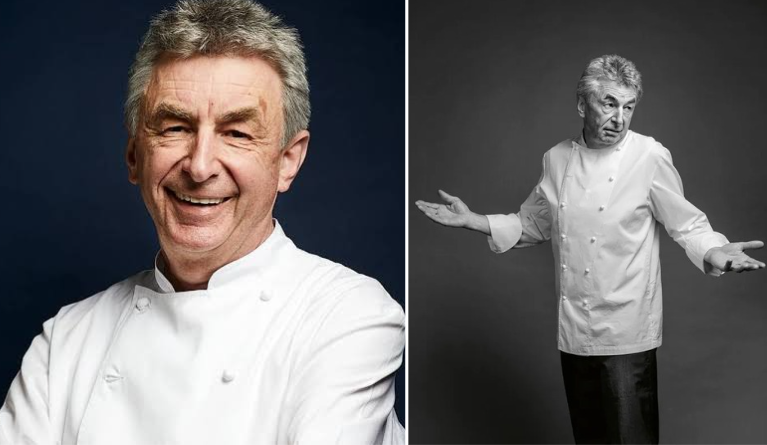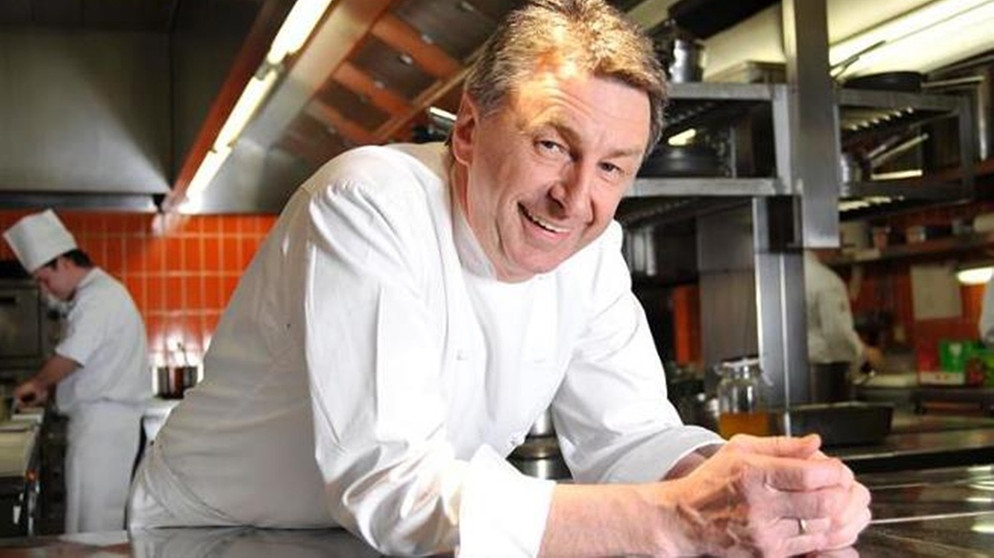Who is Hans Haas The Master Chef Who Redefined German Cuisine

In the heart of Munich, a culinary temple has stood for over five decades, its name synonymous with unparalleled excellence: Restaurant Tantris. For more than thirty of those years, its soul and guiding force was Hans Haas, a chef whose unwavering dedication and visionary philosophy not only guarded its legacy but elevated it, securing a permanent place for German gastronomy on the world stage.
Quick Bio
| Quick Bio: Hans Haas | |
|---|---|
| Full Name | Hans Haas |
| Profession | Master Chef, Restaurateur |
| Nationality | German |
| Born | September 29, 1957 |
| Culinary Style | Cuisine Vitale (Modern German) |
| Awards | 2 Michelin Stars (held for over 30 years), Gault Millau “Chef of the Year” |
| Signature Restaurant | Restaurant Tantris, Munich |
| Career Highlight | Redefining modern German fine dining |
| Spouse | Alfreda “Freda” Haas (Business Partner) |
| Legacy | Mentor to a generation of top German chefs |
Who is Hans Haas? The Synopsis

Hans Haas is far more than just a successful chef; he is an institution. Widely regarded as one of the most influential German chefs of his generation, Haas is the virtuoso behind Munich’s two-Michelin-starred Restaurant Tantris, a title he held with immense pride and consistency from 1993 until his recent semi-retirement. His name is inextricably linked to a revolutionary culinary movement that transformed Germany’s gourmet scene. Before Haas, German cuisine was often perceived internationally as hearty and robust but lacking the finesse of its French or Italian counterparts. Haas single-handedly challenged and changed that perception. He is the pioneering force behind “Cuisine Vitale,” a philosophy that emphasizes lightness, vibrant flavors, and the absolute purity of seasonal ingredients, placing the focus on the essential taste of each component on the plate.
Early Life and Background: A Bavarian Beginning

Hans Haas was born on September 29, 1957, in Bavaria, Germany. Growing up in this culturally rich region, known for its distinct traditions and hearty fare, provided the initial backdrop for his culinary journey. While his later style would become known for its lightness, the foundational appreciation for quality, regional produce—from forest mushrooms to river fish and farm-fresh dairy—was deeply ingrained in him from an early age. This Bavarian beginning did not necessarily foreshadow a revolutionary chef; instead, it provided a grounding in authenticity and a deep respect for local terroir that would remain a cornerstone of his cooking, even as his techniques and presentations evolved into the realm of high art.
Culinary Education & Training: The Apprentice Years
Like most great European chefs, Haas’s path to mastery began with a rigorous classical apprenticeship. This formal training in Germany was crucial, as it hammered home the essential disciplines of the kitchen: precision, technique, consistency, and respect for the craft. He learned the fundamentals of butchery, sauce-making, and pastry work, building the solid technical foundation upon which he would later innovate. This period was less about creative expression and more about mastering the rules—a necessary step before he could intelligently and skillfully bend them. This formative time instilled in him a level of professionalism and perfectionism that would become his trademark.
The Crucible of Excellence: Working with the Masters

If his apprenticeship taught him the rules, his time working under culinary legends taught him how to transcend them. To broaden his horizons, Haas left Germany to work in the kitchens of France and Switzerland, a move that proved to be the most formative of his career. His most pivotal mentorship was with Eckart Witzigmann, the first German chef to receive three Michelin stars for his restaurant Aubergine in Munich. Witzigmann, known as the “Pope of German Cuisine,” was a revolutionary himself, introducing Nouvelle Cuisine to Germany. Under his wing, Haas learned about elegance, refinement, and the art of balancing flavors with breathtaking precision.
Perhaps an even greater influence was his time with the Swiss maestro Frédy Girardet, near Lausanne. Though often called a chef, Girardet considered himself a “cuisinier”—a cook—whose sole religion was the sublime quality and taste of his ingredients. This philosophy resonated deeply with Haas. Working in Girardet’s crucible of excellence, where every single component was scrutinized for perfection, cemented Haas’s own belief that true culinary artistry lies in highlighting the ingredient itself, not in disguising it with complicated techniques. This combined experience with two of Europe’s greatest culinary minds forged Haas’s unique perspective, blending French-technical finesse with a profound, almost sacred, respect for nature’s produce.
His Restaurant Career: The Tantris Era
In 1991, Hans Haas faced the monumental task of taking over the helm of Restaurant Tantris, a venue already steeped in legend since its founding in 1971. The pressure was immense. Rather than radically changing its identity, Haas respectfully evolved it. Within two years, his relentless pursuit of perfection was recognized.
This incredible longevity is a testament not to stagnation, but to constant evolution within his framework of Cuisine Vitale. While the foundation remained the same, his menus continuously evolved with the seasons, showcasing the very best products available. His leadership made Tantris not just a place to eat, but a destination for a profound culinary experience.
Cooking Style & Philosophy: “Cuisine Vitale”
The term “Cuisine Vitale” is the best encapsulation of Hans Haas’s culinary approach. It translates to “vital cuisine,” and it is a style defined by its liveliness, healthfulness, and stunning clarity of flavor. Haas’s food is the antithesis of heavy, sauce-laden traditional German dishes. Instead, his plates are characterized by their breathtaking lightness and vibrant, natural colors. The philosophy is deeply rooted in an uncompromising commitment to seasonal and regional ingredients. He sourced the finest asparagus from Bavaria in spring, perfect porcini mushrooms in autumn, and the best venison in winter.
His technique was never used to overpower the main ingredient but to elevate it. This commitment to essence requires incredible confidence and skill—there is nowhere to hide. Every element must be perfect. This dedication to purity and balance is what makes his cuisine both timeless and modern.
Contributions to German Cuisine: A Modern Revolution
Hans Haas’s greatest contribution extends far beyond the walls of Tantris. He is widely credited with leading the modern revolution of German fine dining. Before his era, Germany’s gourmet restaurants were often trying to emulate French classics. Haas, along with a few contemporaries, forged a new path: a distinctly modern German identity.
He demonstrated that German cuisine could be both sophisticated and soulful, precise and flavorful, elegant and grounded. This gave a new generation of German chefs the confidence to look inward to their own regions for inspiration, rather than outward to international trends. By doing so, Haas didn’t just put his restaurant on the map; he fundamentally changed the perception of German gastronomy, forcing the international culinary community to look at it with new-found respect and admiration. He proved that German cooking could stand shoulder-to-shoulder with the best in the world.
Consultation & Mentorship: Shaping the Next Generation
The mark of a truly great chef is often measured by the success of those they teach. In this regard, Hans Haas’s legacy is immense. The Tantris kitchen was known as a finishing school for culinary excellence. Countless young chefs who passed through his rigorous tutelage have gone on to achieve great success, earning Michelin stars of their own and leading top kitchens across Germany and Europe. Haas was a demanding mentor, known for his quiet but firm demeanor and his incredibly high standards. He expected perfection, and in doing so, he drew perfection from his team.
This role of mentorship is a critical part of his story. This multiplier effect has cemented his role as a foundational pillar of contemporary European gastronomy.
Relationships & Personal Life: The Partnership Behind the Success
Behind every great chef is often an even greater team, and for Hans Haas, that team was led by his wife, Alfreda “Freda” Haas. Theirs is one of the most respected partnerships in the culinary world.
Legacy & (Semi-)Retirement: Passing the Torch
After more than 30 years of unwavering commitment and daily service, Hans Haas began a well-deserved semi-retirement in 2022. He passed the executive chef responsibilities to his longtime sous-chef, who had been groomed for years to continue the Tantris legacy. Haas himself did not fully step away; he remains involved in an advisory capacity, ensuring the standards he set remain intact. This graceful passing of the torch ensures that the institution he built continues to thrive.
His legacy is multifaceted: it is the sustained excellence of Tantris, the revolutionized image of German cuisine, and the dozens of chefs he mentored. He is a symbol of how consistency, passion, and a clear philosophy can create a lasting impact. Awards and stars are temporary validations, but changing an entire country’s culinary identity is a permanent legacy. Hans Haas did exactly that.
Fun Facts & Lesser-Known Stories
- Celebrity Clientele: Tantris, under Haas’s tenure, was a magnet for international celebrities, politicians, and culinary pilgrims from around the globe, all seeking his legendary tasting menus.
- Architectural Icon: The restaurant itself is a celebrated example of 1970s postmodern architecture, famous for its bold use of orange and red colors and unique design, making the dining experience visually stunning before the food even arrives.
- The Ingredient Stickler: Haas was known to be famously meticulous about ingredients. Stories from his kitchen often recount him personally inspecting every delivery of fish, meat, and vegetables, rejecting anything that didn’t meet his impeccable standards.
- A Man of Few Words: Unlike some flamboyant celebrity chefs, Haas was known for his quiet, focused, and humble demeanor, preferring to let his food do the talking.
FAQs About Hans Haas
How many Michelin stars does Hans Haas have?
Hans Haas held two Michelin stars for Restaurant Tantris for over 30 consecutive years, from 1993 until his semi-retirement.
Where did Hans Haas train?
He completed a classical apprenticeship in Germany before training under masters Eckart Witzigmann in Munich and Frédy Girardet in Switzerland.
Is Hans Haas still cooking?
He semi-retired from day-to-day operations in 2022 but remains involved with Restaurant Tantris in an advisory capacity.
Who is the owner of Tantris Munich?
Hans Haas and his wife, Freda Haas, are the owners of Restaurant Tantris.
For More Update and Stories Visit: Hollywood Times




